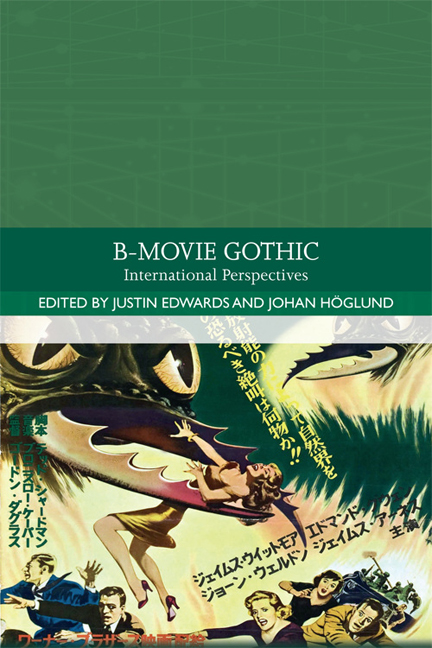2 - Re-scripting Blaxploitation Horror: Ganja and Hess and the Gothic Mode
Published online by Cambridge University Press: 06 May 2021
Summary
During the 1970s, a plethora of low-budget, kitschy Horror films aimed at Black audiences flooded American cinemas. These films were often filled with excessive intra-racial violence, gratuitous nudity, and sympathetic monsters who were invariably products of systemic racism. However, Bill Gunn's Ganja and Hess (1973) eschews the violence and monsters typical of such movies. A Blaxploitation-aimed project, the film is Gothic in its portrayal of racial turmoil as characters struggle with questions of assimilation, desire and racial community. The Gothic is invaluable to expressing the film's concerns while also evading the stereotypes and trappings that plagued Black Horror films of the era.
The fate of Gunn's film, however, reflects back upon the expectations and limitations imposed upon Black B-films of the era. The production company pulled the film from theatres, edited it and rereleased it with additional violence and sex scenes. However, Gunn's example proves significant for later Black filmmakers. Movies like Def By Temptation (1990) and Tales from the Hood (1995), while returning to the kitsch of the Blaxploitation films, resist readings as simple Horror movies. Like Gunn's film, these later movies turn to Gothic tropes to emphasise the psychological terror of negotiating modern Black identity.
Blaxploitation films were, by their very definition, B-films. Quickly produced on low budgets, the films appealed to Black audiences by exploiting their fantasies of resistance against systems of White dominance. The films were ‘aimed directly at young Black males who imagined themselves machine-gunning all the balls on the pool table, then doing likewise to “absolutely, positively every last (white) motherfucker in the room”’ (Patterson 2002, 5). Blaxploitation movies often contained gratuitous Black female nudity, consequently reproducing ideologies about Black female sexual accessibility and hypersexuality. The Black Horror films produced during the era followed this formula. Populated with sympathetic Black monsters, disempowered Black anti-heroes, vicious white antagonists and Black heroines, they were unsparing in their depiction of violence, mayhem and revenge.
In Blaxploitation Horror, Black actors occupied lead roles as monsters fighting against an unjust and virulently racist system; they stood as figures of Black strength, protest and militancy. For instance, Blacula was presented as an unwilling product of racist violation; his violence was therefore a mixture of righteous rage and vengeance.
- Type
- Chapter
- Information
- B-Movie GothicInternational Perspectives, pp. 32 - 49Publisher: Edinburgh University PressPrint publication year: 2018

